

Andy is a jack-of-all-adventures, master of none. Depending on the season, you might find him rock climbing, trail running, kayaking, skiing, mountain biking, surfing or good ol’ hiking.

If you’re new to whitewater kayaking and shopping for gear on a budget, this list is for you!
This Affordable Gear List is for recreational kayakers who want to explore Class 1 – Class 3 whitewater rivers. Although kayakers of all disciplines can benefit from this Gear List, it’s primarily targeted toward recreational river runners.
Whitewater kayaking is an adrenaline-fueled adventure that can transport you to all corners of the globe. But it ain’t cheap to start out in. Plus, there’s a dizzying array of options. Should you purchase the $300 neoprene spray skirt or the $30 nylon skirt being sold 50% off? What kind of kayak is appropriate for beginner to intermediate whitewater?
Let’s find out!
If you just dropped $500 on the latest bent-shaft, carbon fiber, feathered paddle from Werner, then feel free to click the Back button.
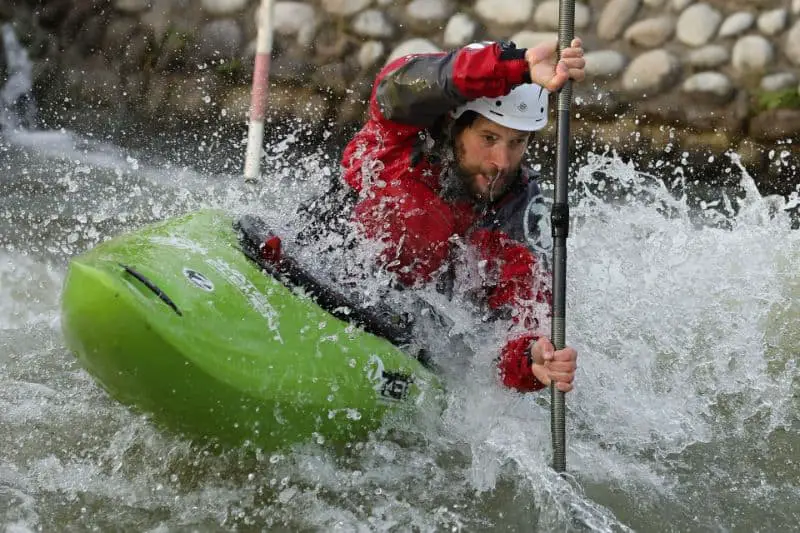
You can drown. You can break a leg. You can smash your skull. Water is dangerous, people!
The two biggest hazards on rivers are holes and strainers.
A full description of safety while inflatable kayaking is beyond the scope of this article. Dangers include everything from drowning to hypothermia to bacterial infection.
Here are several of my personal recommendations:
Squeezing into a whitewater kayak is like entering a time machine or wearing a jetpack: It can transport you to a world you didn’t know existed!
Unlike sea kayaking or flatwater kayaking, whitewater kayaking is all about the rapids. Here is the international rating system for whitewater rapids:
New kayakers begin in Class I-II water, but with practice, most kayakers become comfortable in Class III and some Class IV terrain. Class IV+ and above is reserved for the experts!

There are many styles even within whitewater kayaking.
This guide is about easy-to-moderate whitewater kayaking, from Class I to Class III. You’ll run creeks and rivers, enjoying the wave trains, catching the eddies, and surfing the holes. Just stay out of the keeper holes and stay away from fin rocks!
| Item | Price Range | Notes |
|---|---|---|
| Kayak | $300 - $700 (used) | $1,000 - $2,000 (new) | See Gear Notes |
| Paddle | $50 - $200 (used) | $100 - $400 (new) | See Gear Notes |
| Spray Skirt | $75 - $300 (new) | See Gear Notes |
| Helmet | $20 - $100 | Kayaking or multi-sport helmet rated to BS EN 1385:2012. |
| Personal Flotation Device (PFD) | $20 - $100 | USCG Type III or V most popular |
| Wetsuit | $50 (Used) - $300 | See Gear Notes |
| Nose Clip | $5 | For practice when rolling! |
| Whistle | $5 | For signaling for help! |
| Sunscreen | $5 | You burn faster on the water! |
If you’re entering whitewater kayaking on a budget, you have no choice but to buy a used kayak.
Virtually all the kayaks you find at Big Box retailers, even the sit-in kayaks, are designed for flat and slow-moving water. A few can be taken out to the ocean surface or Class II rivers, but they’re not made for Class III whitewater and above. Most of these would be considered fishing or touring kayaks.
Unfortunately, a purebred whitewater kayak costs about $1,000. If that’s too rich for your blood, buy used. That’s what I did!
The good thing about a used kayak is that, unlike a car, it doesn’t have a mileage limit. Contrary to what you might think, the biggest enemy of a kayak isn’t rocks; it’s actually sunlight. Storing your kayak outside unprotected can halve its lifetime!
P.S. You may need float bags if your kayak gets easily swamped.
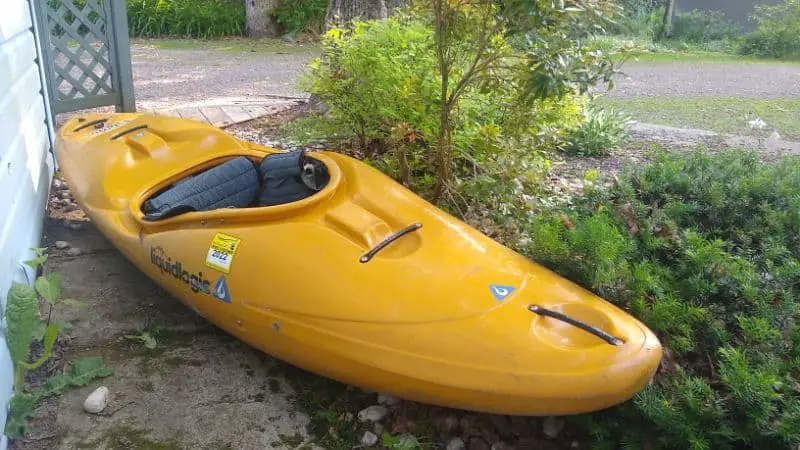
Similar to buying a boat, your best bet is to buy a used whitewater kayak paddle.
There are some significant differences between recreational kayak paddles and whitewater kayak paddles.
Premium whitewater paddles are usually made of carbon fiber, feature neutral-grip bent shafts, and weigh as little as 2.2 lbs! But those are a bit rich for our blood. Just look for something with a wide, flat blade that’s the right length for your height.
Although … that’s not what I did (at first). I couldn’t find a good used paddle for a little while after I bought my first hardshell kayak. So I bought a $30 4-piece recreational kayak paddle, sawed off the blades, cut 20 cm off the shaft length, drilled new push-button holes, and had myself an improvised 200cm whitewater kayak paddle! Didn’t use it forever, but it was a cheap way to get started.
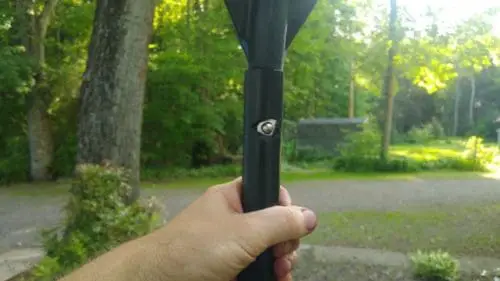
Buying a spray skirt for the first time can be confusing.
I couldn’t find a used spray skirt that both fit my kayak AND fit my waist. I looked on Ebay, Facebook Marketplace, and Craigslist. No luck.
Which led me to my fourth question: Did I want nylon or neoprene?
I asked around trying to find a factory second neoprene spray skirt. Unfortunately, there was nothing on Ebay, Facebook Marketplace, or any local outdoor goods retailer that fit me and my boat.
So I bought a Level Six Excursion nylon spray skirt for 30% off. It’s not completely waterproof, and I wouldn’t trust it above Class 3, but it stays put during a roll, and I got it for $39!
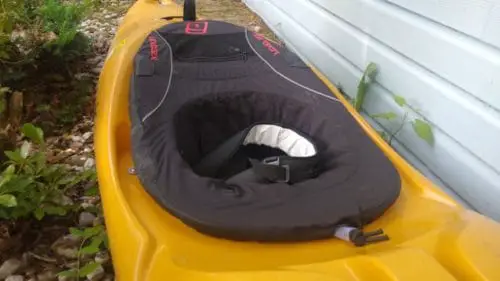
Other places on the web will tell you, in great detail, just what makes a wetsuit good or bad. I shall not rehash their advice. If you’ve never worn a wetsuit before, check out this guide.
For three-season whitewater kayaking, a three-quarters spring or sleeveless wetsuit is recommended. A 2mm or 3/2mm thickness is preferred; any thicker, and you can stifle your movement.
I would only add this: Buy used. Find three used wetsuits on Ebay, buy three of them, and keep the one that fits the best. Return the others. People commonly grow out of their wetsuits, so there are plenty on the aftermarket!
Don’t settle for the wrong wetsuit!
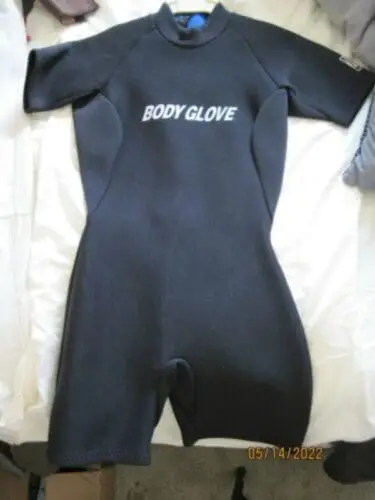
Copyright 2021 – Adventure on the Cheap (SRVS)